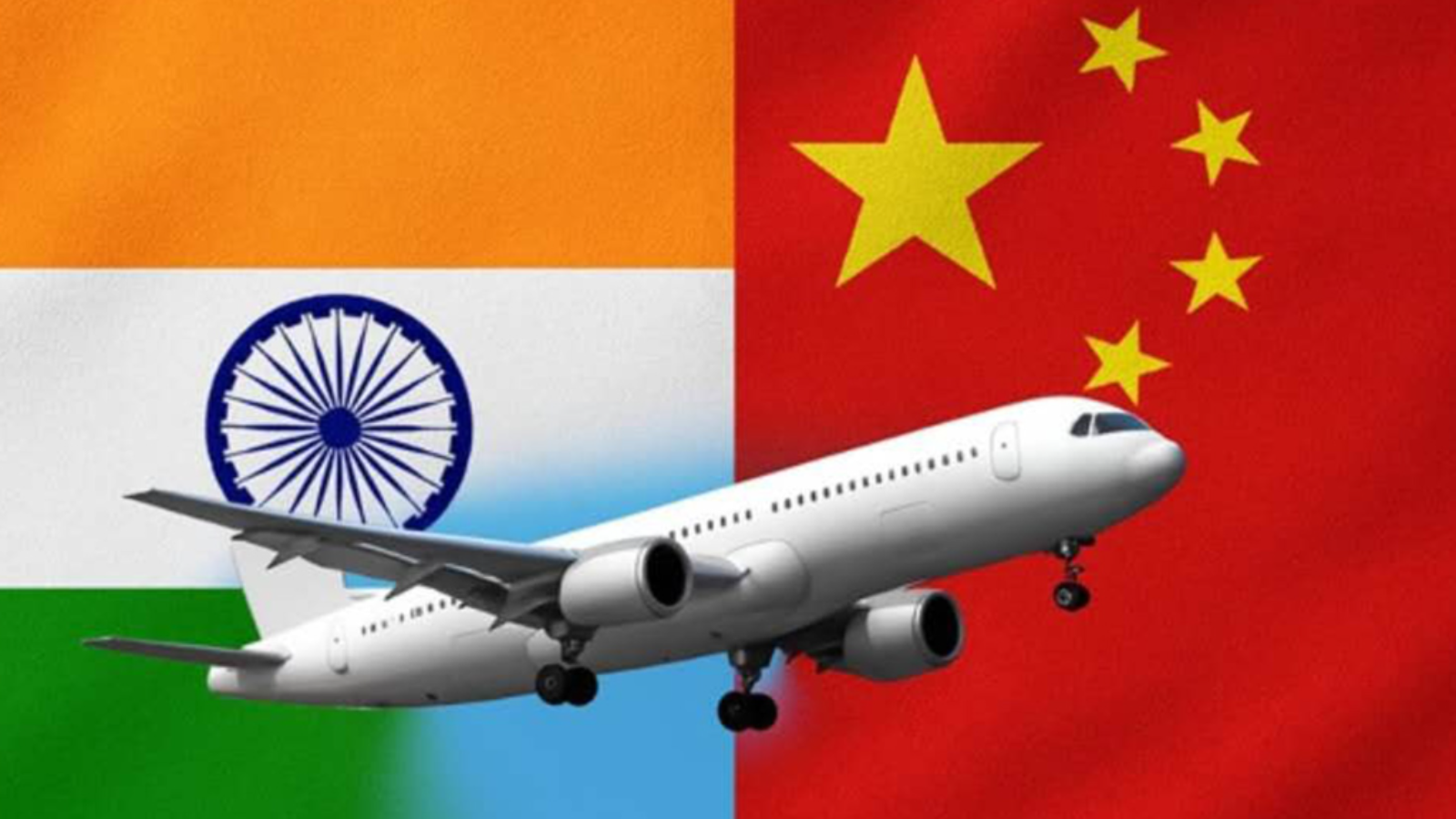India Resumes Tourist Visas for Chinese Citizens After Five Years: Key Steps That Improved 2025 Ties
India has officially resumed the issuance of tourist visas to Chinese citizens worldwide, bringing an end to a five-year freeze that began after the 2020 Galwan clash. This major step marks a visible thaw in India-China relations improving 2025, coming after months of diplomatic conversations and confidence-building measures. The order allowing visas to restart was issued in July 2025, setting the stage for broader engagement under the India resumes tourist visas for Chinese citizens 2025 policy shift.
This development follows the revival of the Kailash Mansarovar Yatra revival 2025, which restarted in June after being suspended for five years. The first batch of Indian pilgrims successfully crossed into Tibet, signaling growing openness between the two nations. Earlier, on April 1, leaders from both sides—including President Xi Jinping, President Droupadi Murmu, Premier Li Qiang, and Prime Minister Narendra Modi—exchanged congratulatory messages on the 75th anniversary of diplomatic ties, setting a positive tone for the year’s India-China bilateral engagement 2025.
Diplomatic momentum picked up through 2025. External Affairs Minister S Jaishankar visited Beijing in July, where he described the relationship as “gradually moving in a positive direction” with a “fundamental basis for mutual strategic trust.” The statement underscored ongoing efforts to stabilize ties under the evolving India-China mutual trust framework. Soon after, Chinese Foreign Minister Wang Yi visited New Delhi in August for meetings with NSA Ajit Doval and EAM Jaishankar, focusing on border de-escalation and normalization.
These meetings paved the way for Prime Minister Modi’s landmark visit to China on August 31—the first in seven years—where he attended the SCO Summit in Tianjin. During the summit, PM Modi and President Xi reiterated their commitment to view each other as “partners rather than rivals,” a significant step in reshaping India-China strategic cooperation 2025.
Another major milestone came on November 10, when direct commercial flights between India and China resumed after five years. The first passengers from New Delhi to Shanghai were welcomed by India’s Consul General in Shanghai, Pratik Mathur. Celebrating the moment, India in Shanghai posted on X:
“Fair Winds & Clear skies! India emerges as a Global Hub as people-to-people ties grow stronger. CG @PratikMathur1 was at hand to receive the first set of passengers as direct flights resumed between New Delhi and Shanghai.”
This event underscored the importance of India-China direct flights resume 2025 for tourism, business, and cultural exchange.
The decision to resume direct flights had been reached earlier in January 2025, forming a crucial part of the year’s normalization roadmap. The restoration of tourist visas for Chinese nationals now completes a major component of the India-China travel and tourism revival 2025, reflecting a broader diplomatic reset after the Galwan valley fallout.
For five years, the suspension of tourist visas had deeply impacted travel and tourism flows. The revival of the Kailash Mansarovar Yatra revival 2025 further signaled growing trust, as Indian pilgrims returned to a spiritually significant journey that had remained paused since 2020.
The leaders’ exchange of greetings on April 1 strengthened the foundation for future cooperation, while EAM Jaishankar’s visit to Beijing in July highlighted a deliberate effort to rebuild trust at a diplomatic and structural level. His remarks about positive movement signaled cautious optimism for long-term India-China relations improving 2025.
Wang Yi’s reciprocal visit to New Delhi in August reaffirmed both sides’ commitment to open dialogue. Discussions on border de-escalation were central to these talks, reflecting the sensitive nature of the boundary issue and its role in shaping India-China normalization diplomacy 2025.
Prime Minister Modi’s engagement at the SCO Summit in Tianjin provided an opportunity for direct strategic communication between the top leadership. Their pledge to view one another as partners offered a renewed vision for the future of India-China strategic ties 2025.
The resumption of flights on November 10 marks a tangible step toward rebuilding people-to-people ties. As travel normalizes, both tourism and business exchanges are expected to benefit significantly under the renewed India-China connectivity restoration 2025.
The decision to restart tourist visas is the culmination of a year filled with diplomatic milestones. It reflects a deliberate attempt by both nations to rebuild trust, reopen channels of engagement, and stabilize one of Asia’s most complex relationships. For India and China, the move signals a hopeful turn toward cooperation and a steady recovery of ties impacted since 2020.

This development follows the revival of the Kailash Mansarovar Yatra revival 2025, which restarted in June after being suspended for five years. The first batch of Indian pilgrims successfully crossed into Tibet, signaling growing openness between the two nations. Earlier, on April 1, leaders from both sides—including President Xi Jinping, President Droupadi Murmu, Premier Li Qiang, and Prime Minister Narendra Modi—exchanged congratulatory messages on the 75th anniversary of diplomatic ties, setting a positive tone for the year’s India-China bilateral engagement 2025.
Diplomatic momentum picked up through 2025. External Affairs Minister S Jaishankar visited Beijing in July, where he described the relationship as “gradually moving in a positive direction” with a “fundamental basis for mutual strategic trust.” The statement underscored ongoing efforts to stabilize ties under the evolving India-China mutual trust framework. Soon after, Chinese Foreign Minister Wang Yi visited New Delhi in August for meetings with NSA Ajit Doval and EAM Jaishankar, focusing on border de-escalation and normalization.
These meetings paved the way for Prime Minister Modi’s landmark visit to China on August 31—the first in seven years—where he attended the SCO Summit in Tianjin. During the summit, PM Modi and President Xi reiterated their commitment to view each other as “partners rather than rivals,” a significant step in reshaping India-China strategic cooperation 2025.
Another major milestone came on November 10, when direct commercial flights between India and China resumed after five years. The first passengers from New Delhi to Shanghai were welcomed by India’s Consul General in Shanghai, Pratik Mathur. Celebrating the moment, India in Shanghai posted on X:
“Fair Winds & Clear skies! India emerges as a Global Hub as people-to-people ties grow stronger. CG @PratikMathur1 was at hand to receive the first set of passengers as direct flights resumed between New Delhi and Shanghai.”
This event underscored the importance of India-China direct flights resume 2025 for tourism, business, and cultural exchange.
You may also like
 Rebel Trinamool MLA to lay 'Babri Masjid' foundation stone, defying party's Kolkata rally
Rebel Trinamool MLA to lay 'Babri Masjid' foundation stone, defying party's Kolkata rally- Scootsy Logistics leases 120,000 sq ft warehousing space in Bhiwandi near Mumbai
- Uncertainty grips Bangladesh amid political accusations over Feb elections: Report
- The Great Pre Wedding Show OTT release date confirmed: When and where to watch Thiruveer, Teena Sravya's Telugu hit movie
- Heavy rainfall helps microplastics enter India's urban lakes
The decision to resume direct flights had been reached earlier in January 2025, forming a crucial part of the year’s normalization roadmap. The restoration of tourist visas for Chinese nationals now completes a major component of the India-China travel and tourism revival 2025, reflecting a broader diplomatic reset after the Galwan valley fallout.
For five years, the suspension of tourist visas had deeply impacted travel and tourism flows. The revival of the Kailash Mansarovar Yatra revival 2025 further signaled growing trust, as Indian pilgrims returned to a spiritually significant journey that had remained paused since 2020.
The leaders’ exchange of greetings on April 1 strengthened the foundation for future cooperation, while EAM Jaishankar’s visit to Beijing in July highlighted a deliberate effort to rebuild trust at a diplomatic and structural level. His remarks about positive movement signaled cautious optimism for long-term India-China relations improving 2025.
Wang Yi’s reciprocal visit to New Delhi in August reaffirmed both sides’ commitment to open dialogue. Discussions on border de-escalation were central to these talks, reflecting the sensitive nature of the boundary issue and its role in shaping India-China normalization diplomacy 2025.
Prime Minister Modi’s engagement at the SCO Summit in Tianjin provided an opportunity for direct strategic communication between the top leadership. Their pledge to view one another as partners offered a renewed vision for the future of India-China strategic ties 2025.
The resumption of flights on November 10 marks a tangible step toward rebuilding people-to-people ties. As travel normalizes, both tourism and business exchanges are expected to benefit significantly under the renewed India-China connectivity restoration 2025.
The decision to restart tourist visas is the culmination of a year filled with diplomatic milestones. It reflects a deliberate attempt by both nations to rebuild trust, reopen channels of engagement, and stabilize one of Asia’s most complex relationships. For India and China, the move signals a hopeful turn toward cooperation and a steady recovery of ties impacted since 2020.









